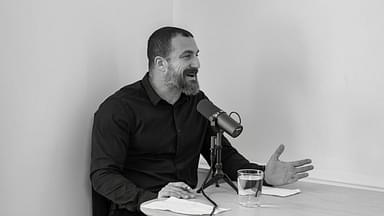Beginning the morning by spending some time soaking in the sunshine feels great. However, Dr. Andrew Huberman suggests that viewing sunlight at different parts of the day will yield different results. To achieve these benefits, one must be prepared for the same.
Sunlight provides various benefits, and the neuroscientist has always stressed its role in physical well-being. His routine consists of various hardcore exercises, a diet he diligently follows, and watching the sunlight every morning.
In an Instagram post, the Stanford professor revealed the benefits of sunlight depending on the time of the day. Viewing sunlight generally results in increased energy levels, but that wasn’t the only positive that came from it. Dr. Huberman explained that the effects of sunlight exposure were closely associated with the circadian rhythm of the body.
Morning sunlight: Increased energy levels and shifts the ‘to-sleep’ clock earlier
Mid-day sunlight: Enhances testosterone production and improves mood
Afternoon/evening sunlight: Kickstarts the body into a sleep-wake cycle
View this post on Instagram
“The positive effect of viewing morning sunlight on daytime, mood, focus, and alertness is well established. It will also make you more of an earlier riser.”
The ever-changing effects of sunlight exposure are due to the phenomenon of substituting for the hypothalamus’ function. Shifting the sleep-wake cycle is one of the many tasks that the brain organ performs. But it doesn’t do so all the time.
“The circadian clock of hypothalamus is not always available for shifting your circadian rhythm. That only occurs in the early day and late afternoon.”
To understand how crucial sunlight is for the betterment of health, Dr. Huberman once talked about the two variants of exposure related to it. Human beings benefit from light and dark exposure; one sets the energy levels high, and the other helps wind down the body. They also provided benefits for the brain.
Dr. Andrew Huberman revealed how light and dark exposure impacted mental well-being
It’s no secret that going out of closed quarters and exposure to sunlight improves mood and assists the circadian rhythm. However, sunlight exposure as a phenomenon can be seen in two different ways: one where the individual sees light and the other where they see dark.
When performed at the appropriate time, light and dark exposure contributed to better mental health. While the benefits of sunlight are popular, Dr. Huberman suggested that making one’s environment dark by limiting light exposure towards evenings could present significant changes in one’s sleep cycle and mental health.





